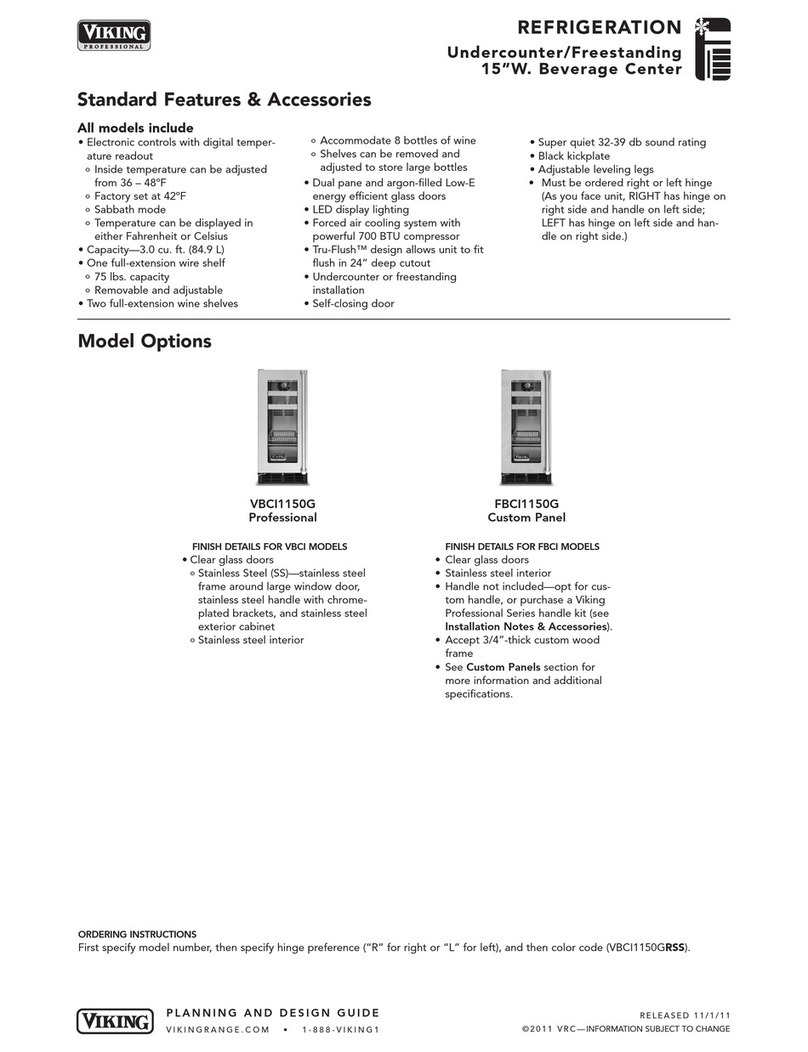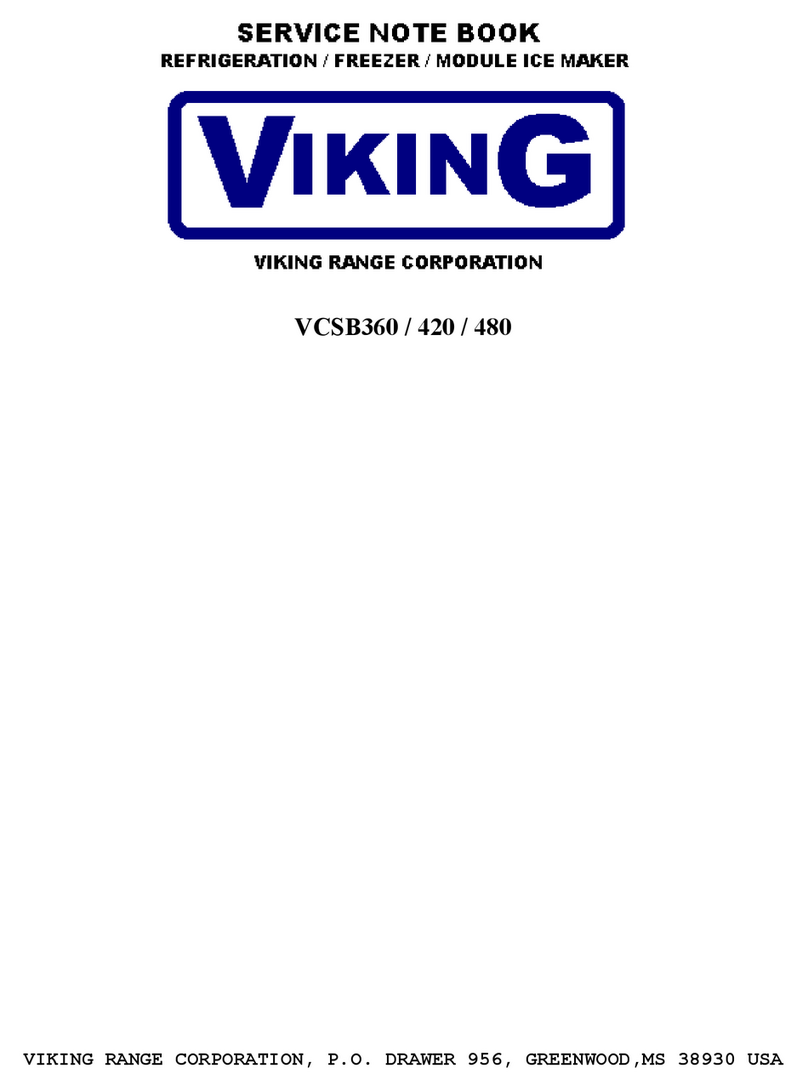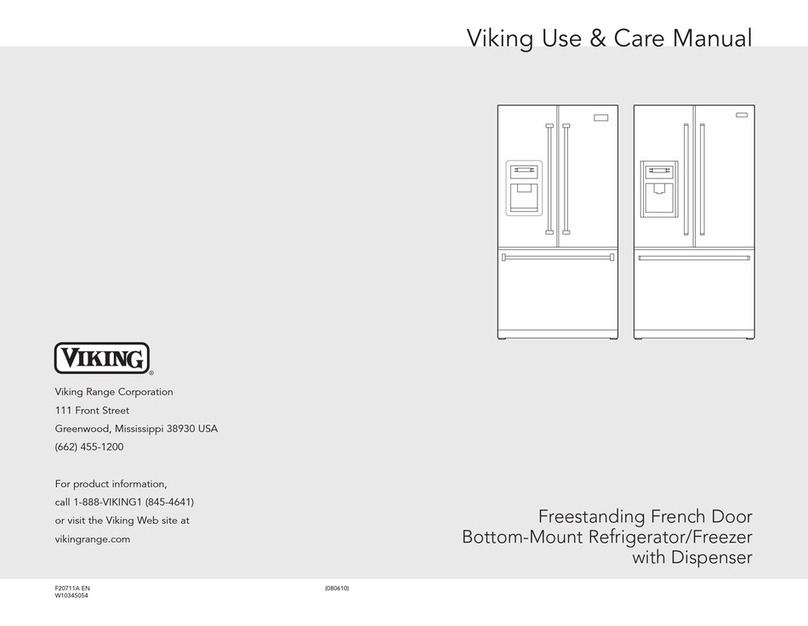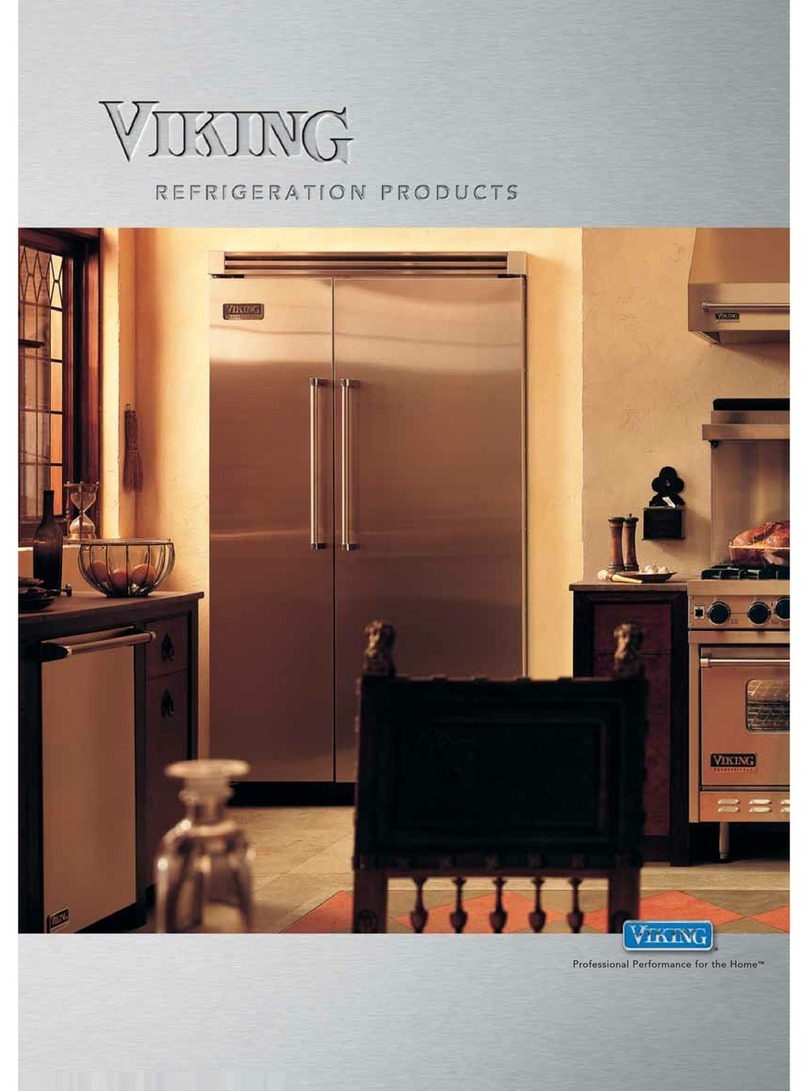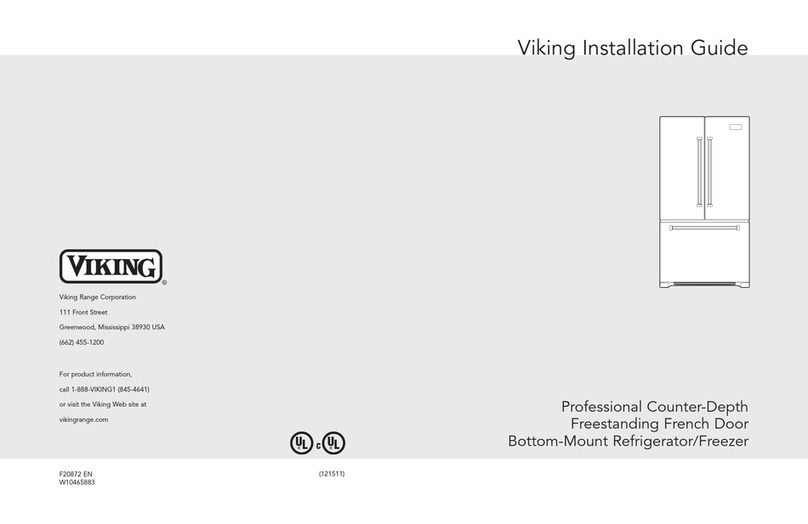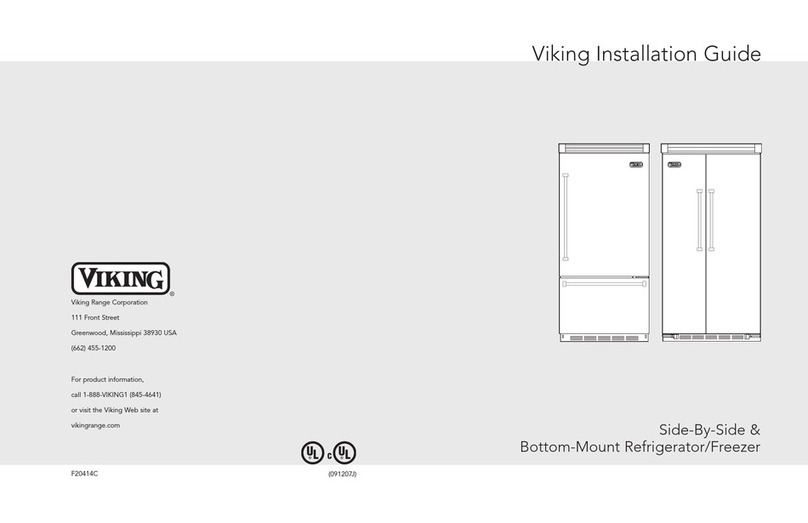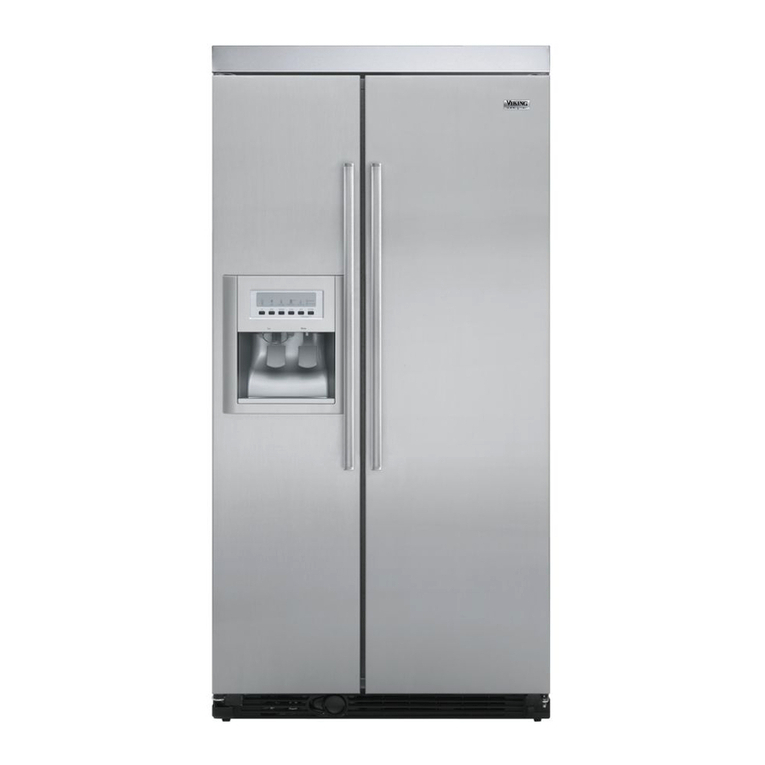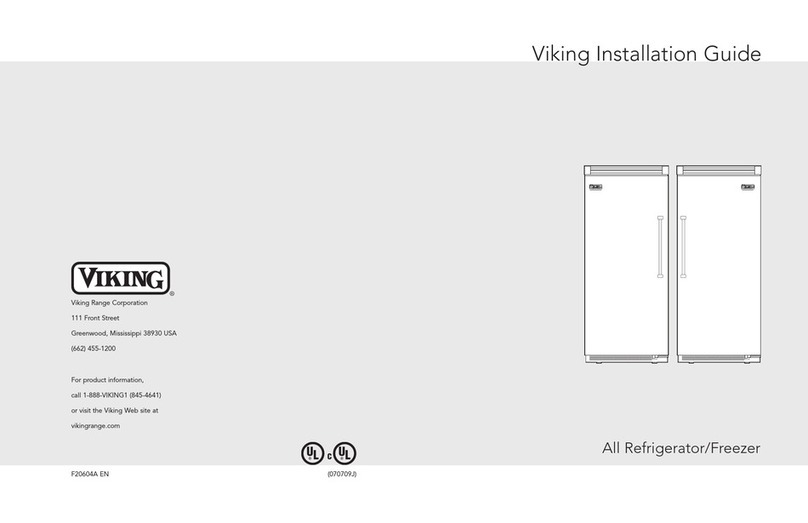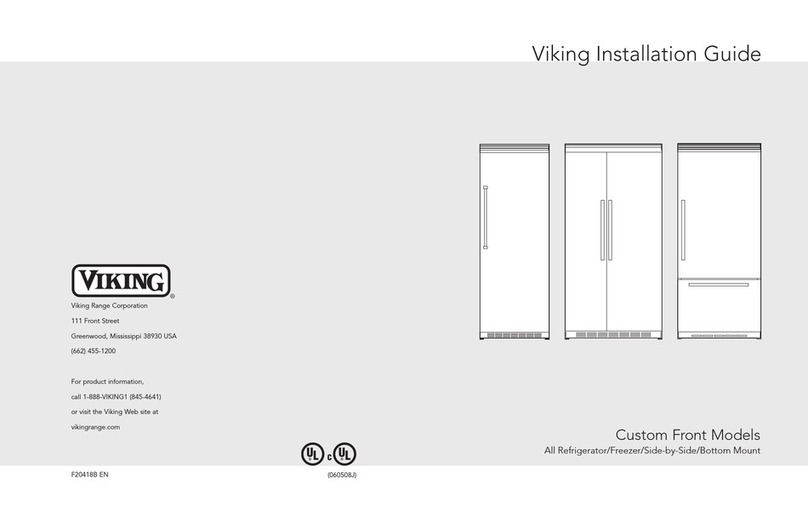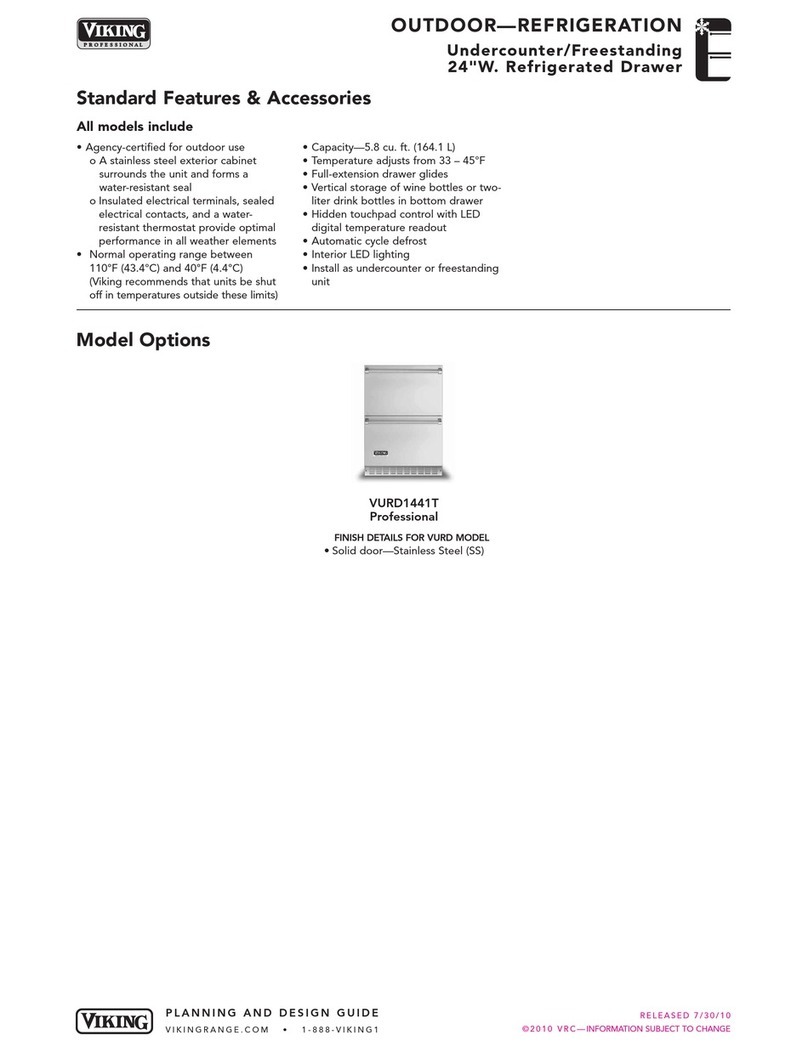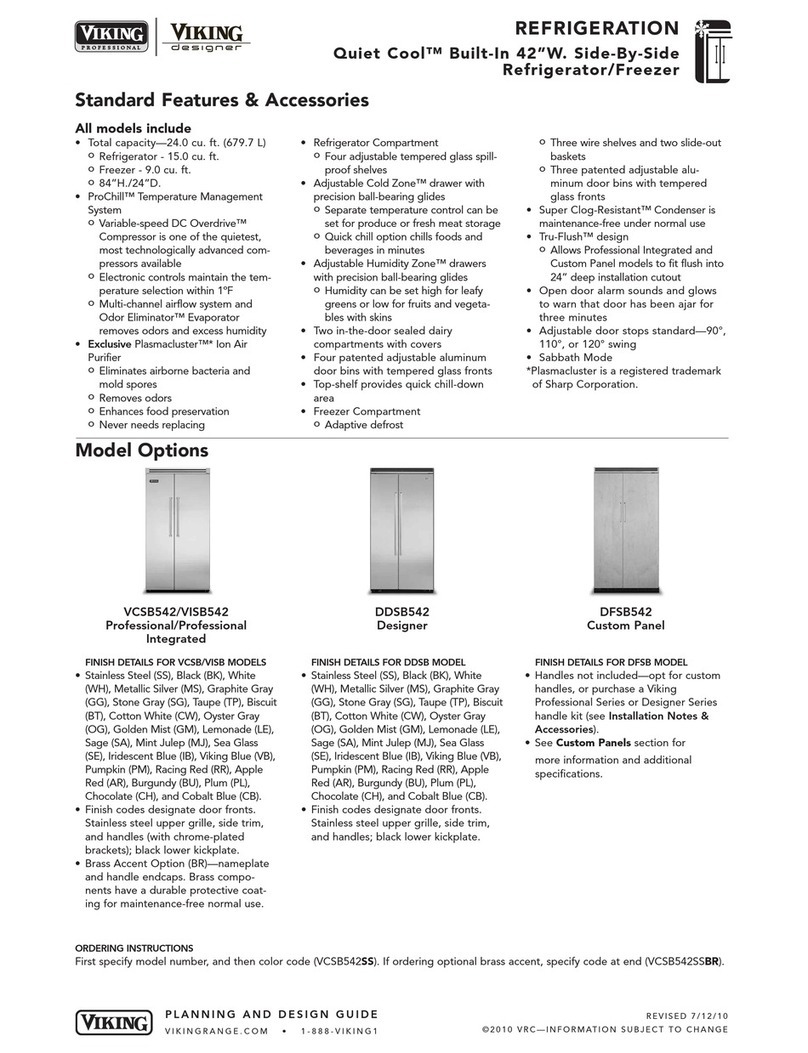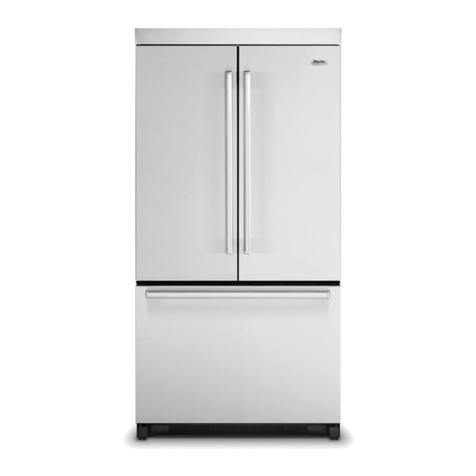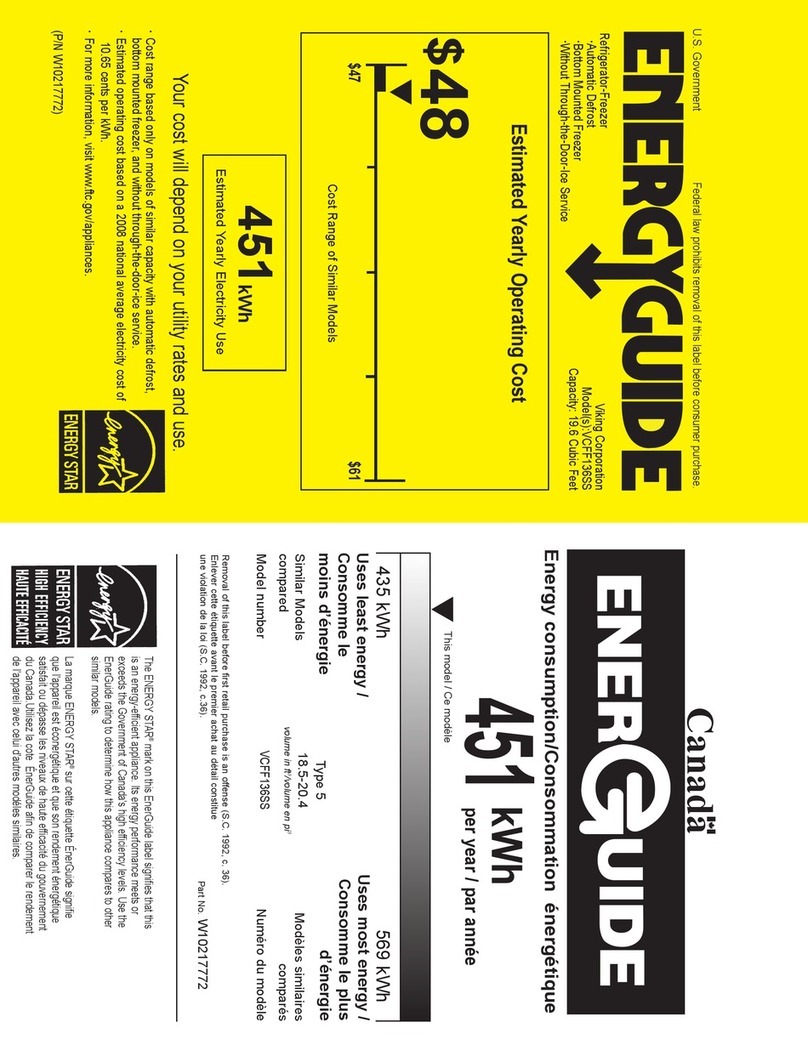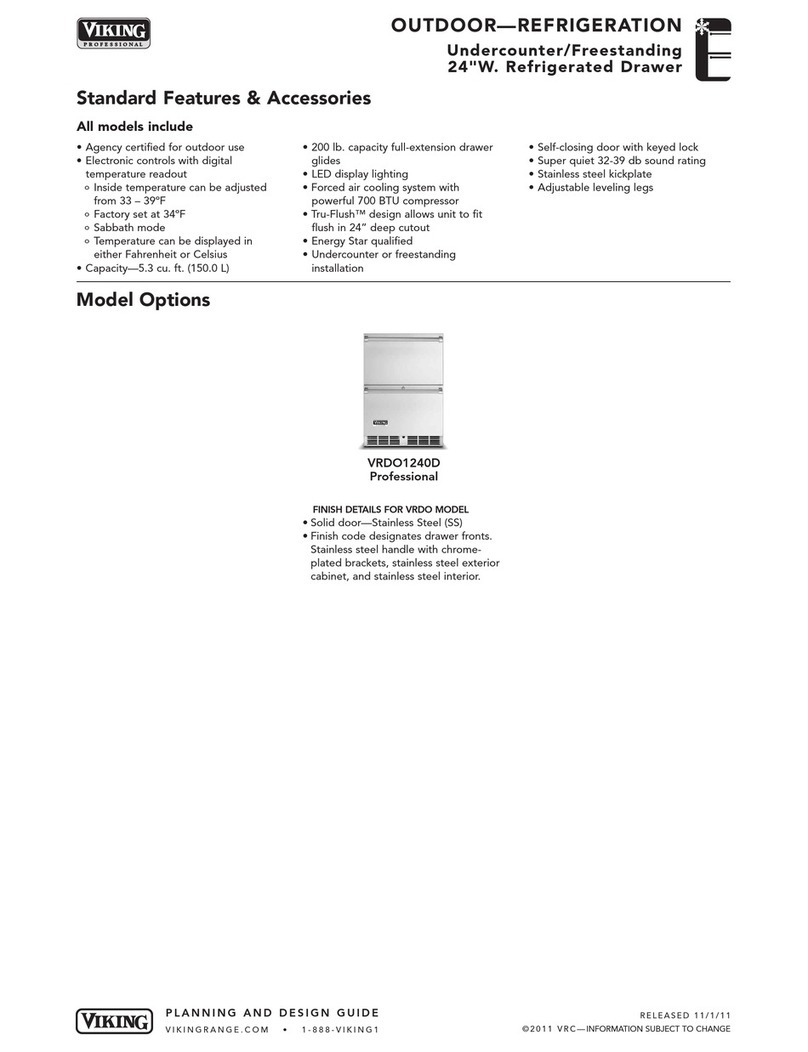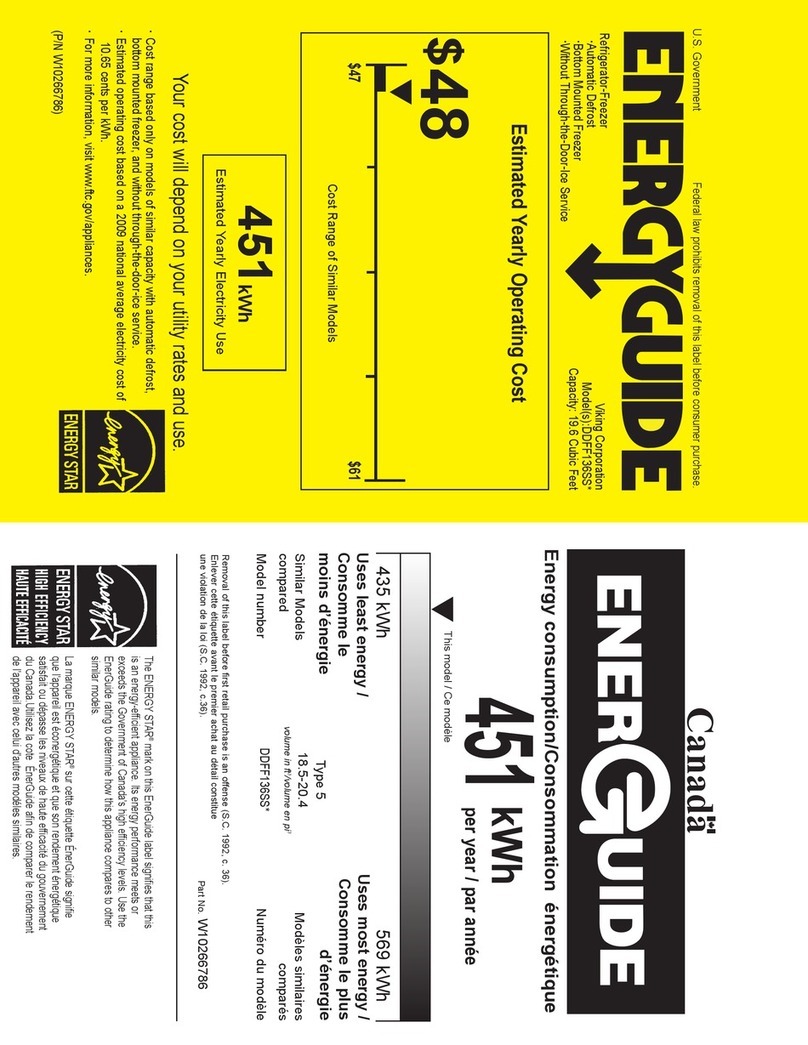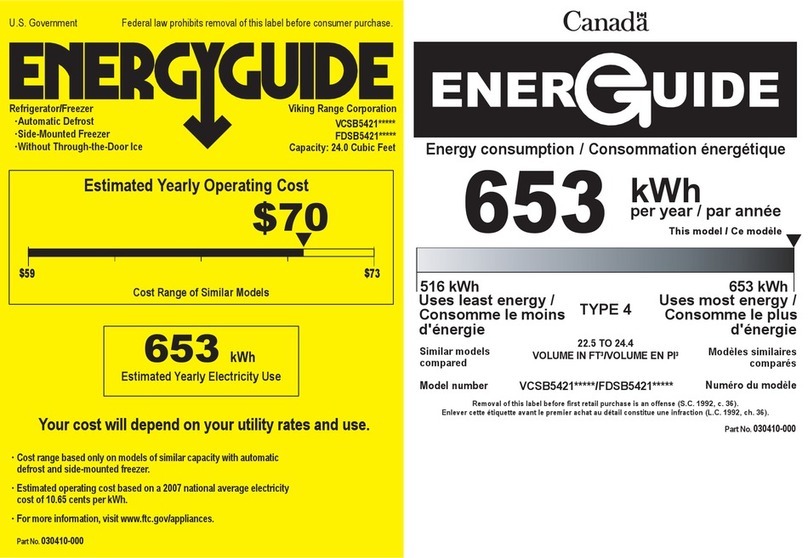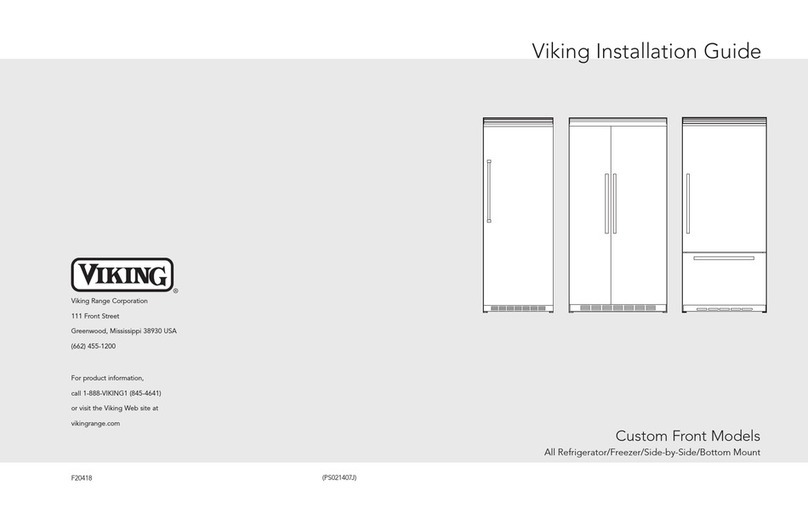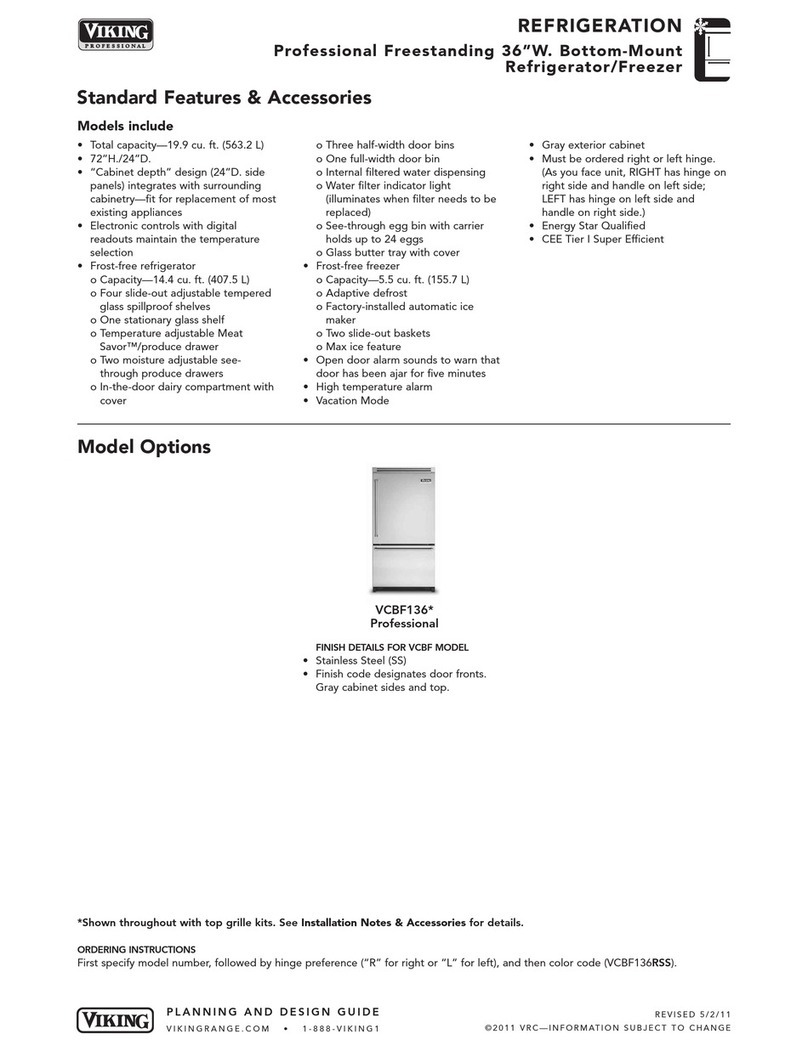
Customers complain about a refrigerator operating too cold, we don’t usually think about a low
refrigerant charge or leak. A low charge or leak typically causes the opposite problem – the
interior becomes too warm as the system runs out of cooling capacity.
The rest of the problem is the “unique” way, some call it the “backwards” way, that the Viking
all refrigerator models react to a low refrigerant volume condition.
When there is a low refrigerant condition in the unit, the gas volume is insufficient to fill all the
tracks in the plate evaporator. As a result, areas not filled with gas do not achieve the very cold
plate sensing thermostats cut-out temperatures. Therefore, whenever the remaining refrigerant
gas volume is not sufficient to fill the area of the evaporator where the thermostat’s sensing
thermobulb is mounted, the compressor runs continuously. Usually the cooling capacity of the
remaining portion of the evaporator which still contains refrigerant, is sufficient to achieve air
temperatures below freezing in the unit when the compressor runs continuously.
Therefore, when dealing with plate sensing thermostats, as opposed to air temperature sensing
thermostats, we must adjust our thinking about how the sealed refrigeration system can react to a
low or leak condition. The conditions described above are representative of a slow leak where
the system still retains a partial charge.
The recommended diagnostic approach for complaints of “operation too cold on lowest setting”
is to insure the compressor is operating and then open the unit door. Allow the door to remain
open for about 5 minutes and observe the frost pattern that forms on the evaporator.
On a properly charged unit, the frost pattern should be continuous and uniform over the entire
surface of the evaporator. The frost pattern should extend from the left-hand wing of the
evaporator across the back segment and around to the right-hand wing. If this frost pattern is
present, the thermostat or its thermo-bulb mount are possible the source of the too cold
condition.
On a unit with a low charge or leak condition, the frost pattern, if present, will typically cover the
left wing and perhaps a part of the back. It will not be present on the entire back or right wing of
the evaporator plate as viewed.
The thermo-bulb mounting location on the VRBD—VUBD—VUAR is at the top of the
evaporator plate on the portion across the rear of the cabinet. On the model VUWC, the thermo-
bulb is mounted to the right wing of the evaporator plate as viewed.
When an incomplete frost pattern is present which does not cover the area where the thermo-bulb
is mounted, the problem is a leak or low refrigerant charge. Changing the thermostat will not
correct the “too cold” condition. Locating the leak, sealing it and evacuation and recharging the
system is the only permanent solution. Leak check all braze joints on the refrigerant tubes and
check all sealed system components for the source of the leak. Include the tubes themselves, the
process stub close-out welds and the copper-to-aluminum braze way joints at the evaporator inlet
and outlet. The braze way welds are difficult to leak check in the cabinet. If the rest of the
system has been thoroughly checked and no leaks have been found, the braze ways are the likely
F90571 5
